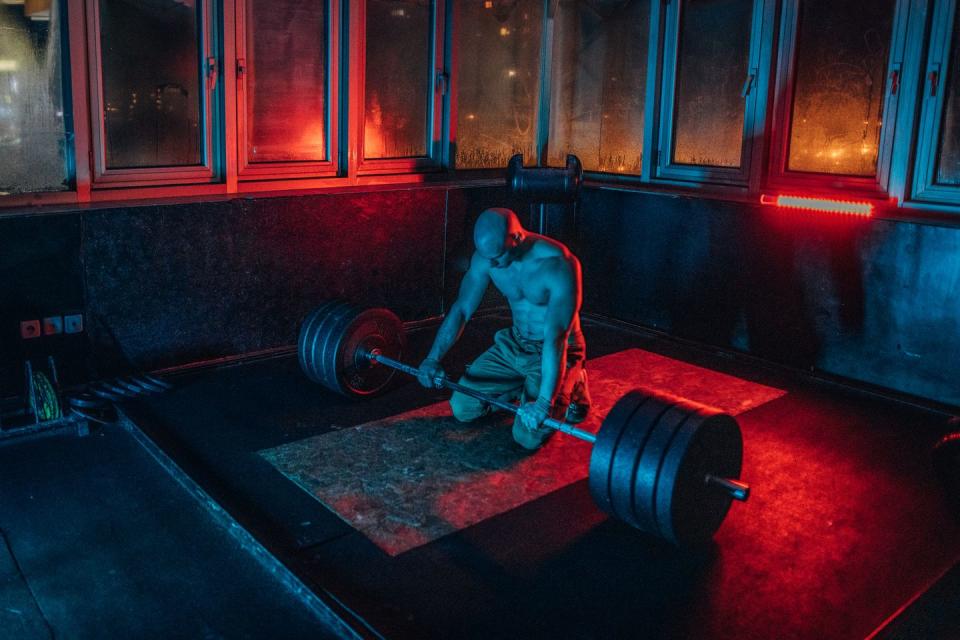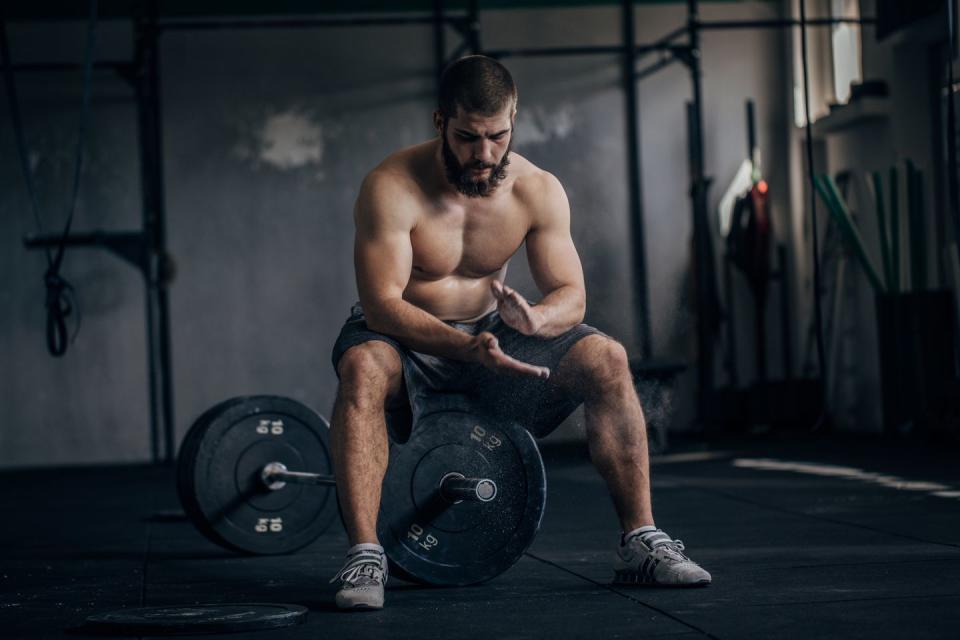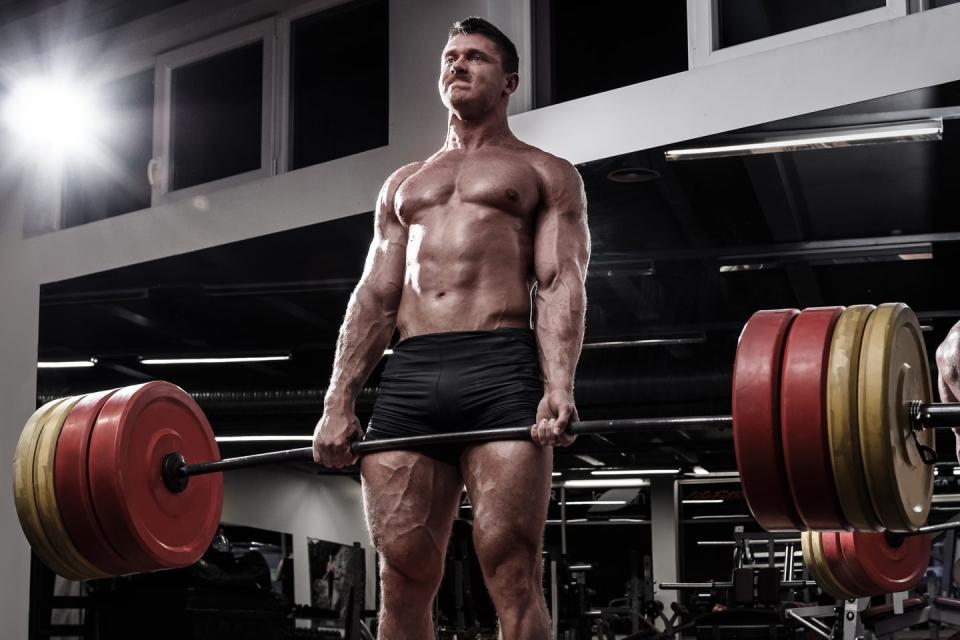Are Deadlifts for Everyone?
I remember the exact moment I dumped the deadlift. It was a Tuesday in March 2016. I was three months into a six-month program to hit my goal of deadlifting 350 pounds. Fourth set, 185 loaded on the bar.
My first and second reps: Clean. Third rep: I noticed a tiny, unnerving shift in the right side of my lower back.
Then the hurt began. It spread across my lower back like a toxic puddle of pain. Kicked-by-a-mule, knife-sharp, what-the-hell-just-happened pain.
That’s it, I vowed as I curled into a fetal position on the gym floor. I don’t care who says this is the king of all exercises. I’m a certified trainer and movement specialist, and I just can’t pull off this friggin’ exercise without hurting myself. I’m done with it.
That was the fourth time in 10 years the deadlift had me flat on my back for a day or longer. It wasn’t serious; a doctor found no herniations or major trauma. But given my history, he said, perhaps I should consider easing up on deadlifting. It was the same suggestion I’d gotten from other doctors after my past injuries.
Finally I was ready to heed the advice of the experts. It felt like breaking off a tumultuous relationship.
Our Long Love Affair With the Deadlift
Our long love affair with this borderline-abusive move is a storied one: On the Greek island of Santorini, a 1,056-pound stone bears the inscription “Eumastas, son of Critobulus, lifted me from the ground.” The words are said to be 2,500 years old.
Today, inspired perhaps by heavy-lifting-based training methods like powerlifting and CrossFit, some 2 million aspiring Eumastases have paid tribute to the art of the #deadlift on Instagram.
Make no mistake: If you can perform it safely, the deadlift is a terrific move. Trainers classify it as a “hip hinge” exercise. It targets your glutes, lower back, and hamstrings, but in truth it hammers nearly every muscle in your body, including your upper back, quads, and traps. It also strengthens your grip.
Pulling all that muscle mass at once has systemic benefits as well. “Any time you use that much muscle in one movement, you’re working your cardiovascular system and burning a ton of fat too,” says Ben Bruno, an L.A.-based trainer and MH fitness advisor.
The Dark Side to Deadlifting

As the morbid name suggests, however, there’s a dark side to deadlifting. According to exercise physiologist Dean Somerset, C.S.C.S., some people just don’t have the anatomy to do deadlifts without risking injury.
One limiting factor, says Stuart McGill, Ph.D., the author of Back Mechanic, is the thickness of your spine. That’s a trait you inherit. The thicker your spine, the heavier the load the bones in your back can handle, while a thinner spine is more flexible but can’t handle heavier loads consistently.
Another critical factor is hip structure. Some people have thigh bones that sit farther back in their hip sockets, Somerset says, so when they try to hinge forward, the sockets essentially act as doorstops. “That makes it harder for them to get into the correct setup position for the deadlift,” he says. It also greatly increases the lifter’s odds of straining, pulling, or herniating something when he performs the exercise.
It’s hard to definitively verify spine thickness or hip structure without an MRI. But either trait can help explain an unusual and stubborn deadlifting handicap.
Based on factors like these, Somerset concludes, “10 to 20 percent of the population may not do well with the deadlift no matter how you coach it.” That’s a pretty hefty slice of the weight-training population who can’t—or shouldn’t—tangle with this so-called essential exercise.
How to Handle the Deadlift Question

My years of courting deadlift-related disaster have led me to conclude that I’m probably in that 10 to 20 percent. Here’s how you can figure out if you are too.
If your back gets cranky when you do deadlifts, the first step is to check your form and mobility: It’s entirely possible that a few minutes of self-coaching or a few weeks of stretching could pay off in big numbers for you (check out the directions below to do just this).
But suppose your form and mobility checkout and you still can’t deadlift from the floor or from a rack without pain. In that case, your problem may be anatomical. That’s significantly tougher to solve.
If you do decide to throw in the towel, there are lots of great alternatives, says Craig Rasmussen, C.S.C.S., a competitive powerlifter. “There’s no reason to be heart broken just because you can’t do one exercise.”
Somerset agrees. “When you’re chasing one exercise, there’s a point of diminishing returns. You could spend six months trying to figure out what’s going on with your deadlift, or you could spend six months training hard using other exercises that don’t cause you pain and suffering.”
I’m going for the second option. Sure, I could get an MRI and a full physiological workup. I could go for counseling with a sports performance psychologist in case the problem is in my head, another possibility Somerset mentions. But why go to all the trouble? I’m as interested in exceptional fitness as anyone, but I’m not a powerlifter.
For me, the deadlift is just a tool and not an end in itself. Now that I know this particular tool doesn’t work for me and actually hinders my progress toward better health and more strength, it’s easy enough for me to throw it away and use different tools that work better. If an exercise doesn’t work for you, move on. Sometimes discretion in the weight room is the better part of valor.
Test Your Deadliftability
Try these tests to see if you should pull heavy iron.
Test 1
Standing Toe Touch
Stand with your legs straight and feet parallel and shoulder-width apart. Bend forward as you reach for your toes. It’s okay to round your back as you descend and reach. Pass: You can touch your toes without bending your knees.
Test 2
Active Straight-Leg Raise
Lie on your back with your legs straight and toes pointed toward the ceiling. Raise one leg as high as you can, noting how far your leg travels upward. Lower it; test the other leg. Pass: You can raise your leg so it’s perfectly straight and forms a 90-degree angle with your body.
Result
Pass both tests? Then you’re cleared for takeoff—that is, flexible enough to do deadlifts. If you failed either one, check out these four alternative moves from Bruno. Their strength and muscle-building benefits are similar to those of the deadlift, but with a lot less risk. You’ll end up with the body you want while keeping yourself off the injured list.
Nail Your Form, Not Your Form
Dial in your deadlift form with tips from powerlifter Craig Rasmussen, C.S.C.S.

1. Nail the Setup
“The bar should be directly above the bow on your shoelaces, and your shoulder blades should be above the bar,” Rasmussen says. Your torso, arm, and hip should form a triangle when viewed from the side.
2. Shin Up to the Bar
As you lift and lower the bar, try to keep it as close to your body as possible. “The farther out the bar goes, the greater the stress you place on your back,” says Rasmussen. Wear long socks so the bar won’t scrape your shins.
3. Hold a Natural Arch
Throughout the movement, keep your lower back in a natural arch, which transfers most of the stress of the exercise onto the proper muscles. Not sure you’re doing it right? Take a video of yourself deadlifting and share the clip with an expert.
You Might Also Like

